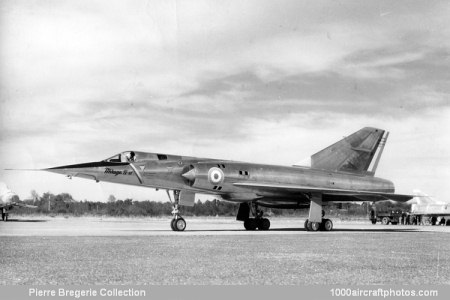07/31/2012. The Mirage IV was a tandem two-seat supersonic bomber of delta-wing design which became the vehicle for the French atomic bomb. The prototype, which was first flown by General Roland Glavany on June 17, 1959, was a scaled-up derivative of the Mirage III fighter, powered by two 13,225 lb (6,000 kg) st SNECMA Atar 9 turbojets with afterburner. It reached a speed of Mach 1.9 during its 14th test flight in July, 1959.
Subsequently the prototype underwent modifications, including (as shown above) a redesigned tail with reduced height and a large circular bulged radome under its center fuselage, ahead of the semi-submerged nuclear free-fall bomb. On September 19, 1960, test pilot René Bigand set an official speed record over a closed circuit of 622 mls (1,000 km) (without payload) between Paris and Melun AFB of 1,225 mph (1,972 kmh), hence the tricolor strip on the fuselage.
Shortly after the prototype was sold to the French AF for pilot conversion and engineer familiarization, it was lost on February 13, 1963. After an in-flight fire, while on a flight from the CEV at Bretigny, the aircraft crashed near Orleans. The crew of two both ejected, the navigator captain Barbe escaped injuries, but the pilot, captain Jean, broke both legs on landing.
